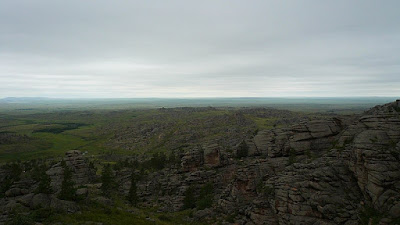Rescuing Deep Time for Landforms
Secular geologists riding for the old earth brand are puzzled by landforms that do not respect uniformitarian dogma. They have trouble with features such as planation surfaces (where the tops of mountains are a bit on the flat side) and others. Some continue to publish speculations even though they have nothing new to offer.
Using uniformitarian assumptions (present processes are essentially the same over millions of years), some landforms should be worn down far more than they are now; erosion rates today are too high. Part of the insistence on calling them old is because minerals-to-minerologist evolution requires them, and because of their reliance on fundamentally flawed radiometric dating. Also, the truth is too difficult for secular owlhoots to tolerate: creation science models of the Genesis Flood are the best explanations for what is observed.
 |
| Planation at Bayanul, Kazakhstan credit: Wikimedia Commons / Ekamaloff |
According to the uniformitarian principle, present day rates of erosion are several orders of magnitude too rapid for the landforms to have survived to the present day. Erosion rates are based mainly on climate and relief and vary significantly, with the highest rates of erosion being in high mountains with high rainfall. . . . At the present rate of erosion, all of the continents would be reduced to sea level in 10 Ma [mega-annum, million years] based on river output to the oceans. However, there are other processes that would slow erosion. Several secular geologists have estimated that this reduced rate would flatten all of the continents in less than 50 Ma.To read the complete article, click on "Revisiting the problem of very old landforms". The video below of Kangaroo Island in South Australia shows some planation, which is mentioned in the linked article.